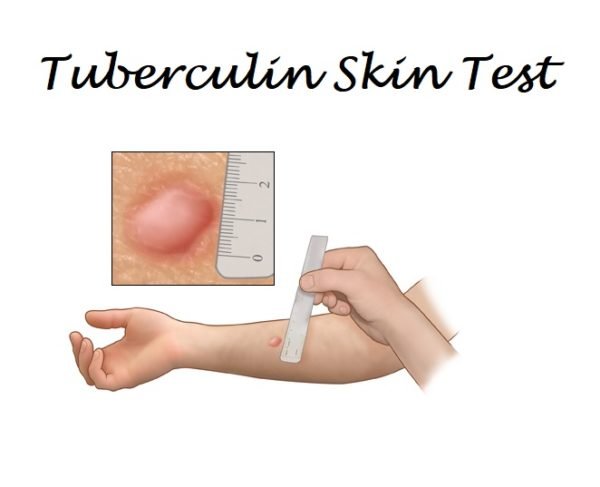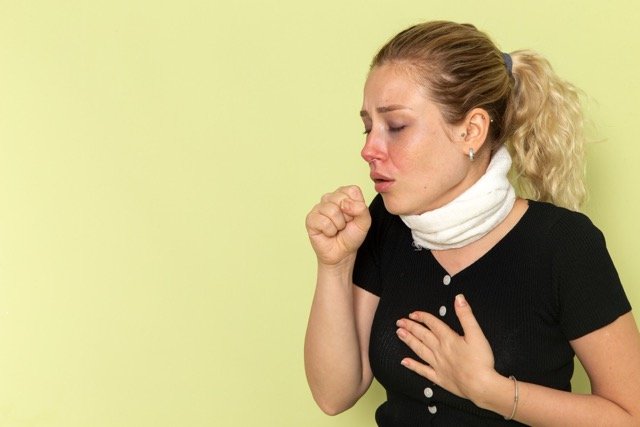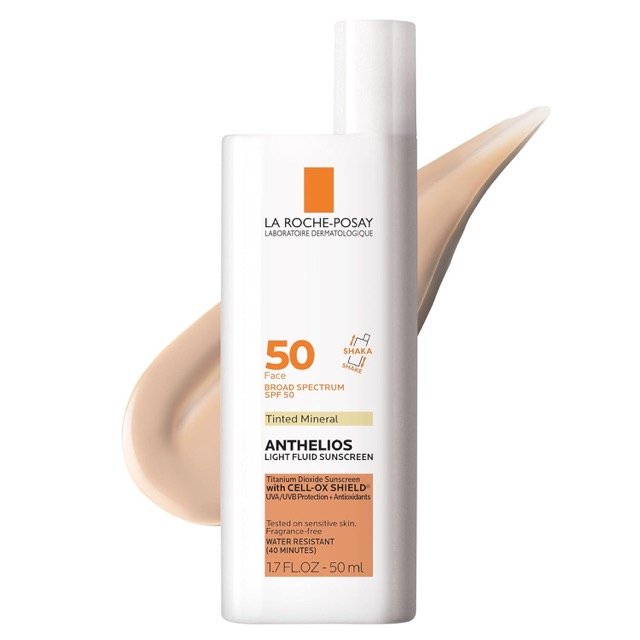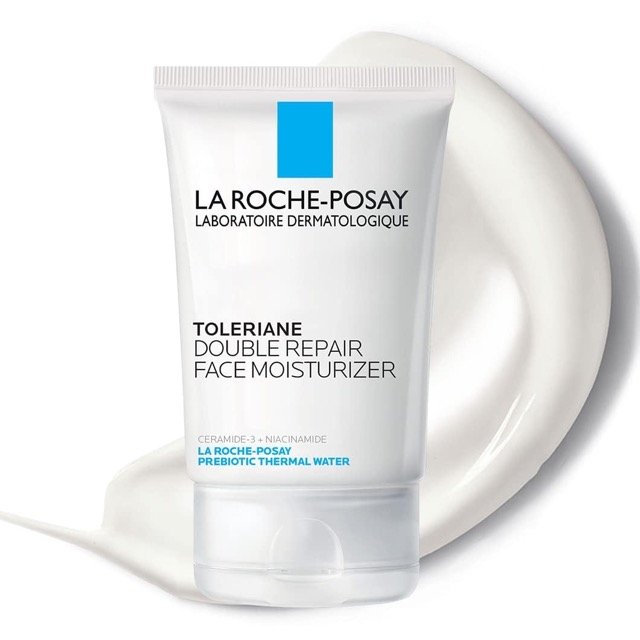The tuberculin skin test is a delayed hypersensitivity reaction to tuberculin. It indicates infection with a variety of non-tuberculosis mycobacteria, previous infection with M. tuberculosis or BCG vaccination (with the live attenuated mycobacterial strain of M. Bovis).
-
Tuberculosis skin test:
- It is used as an aid in the diagnosis of tuberculosis (TB) infection.
Tuberculin Dose in Adults
Dosage in Tuberculin skin test:
- Intradermal: 5 units are given (0.1 mL)
Dosage in TST interpretation:
-
Criteria for positive TST read at 48 to 72 hours :
-
Induration ≥5 mm:
- Patients with recent close contact with a person with known active TB,
- HIV infection (or risk factors for HIV infection, but unknown status),
- patients with chest x-ray consistent with prior TB,
- patients with organ transplants and
- immunosuppressed patients receiving prednisone at a dose of 15 mg/day or more for one month or more
-
Induration ≥10 mm:
- Patients with clinical conditions that increase the risk of TB infection,
- IV drug users,
- mycobacteriology laboratory workers,
- recent immigrants (ie, ≤5 years) from high-prevalence countries residents and employees of high-risk congregate settings,
- children <4 years of age, or
- infants, children, and adolescents exposed to adults at high risk
-
Induration ≥15 mm:
- Patients who do not fit in any of the above criteria (no risk factors for TB)
- A two-step test is recommended when testing will be done at regular intervals (eg, for health care workers).
- If the first test is negative, a second TST should be done 1 to 3 weeks after the first test was read.
-
-
TST interpretation in a health care setting (CDC 2005):
-
Baseline test:
- ≥10 mm is considered positive (either first or second step)
- 0 to 9 mm is considered negative
-
Serial testing without known exposure:
- Increase of ≥10 mm is considered positive
-
Known exposure:
- ≥5 mm is considered positive in patients with a baseline of 0 mm
- ≥10 mm is considered positive in patients with negative baseline or previous screening result of >0 mm
-
Tuberculin Dose in Childrens
Tuberculin skin test:
- Infants ≥6 months, Children, and Adolescents:
- Use adult dosing.
Pregnancy Risk Factor: C
- Studies on animal reproduction have not been done.
- It is not contraindicated to test during pregnancy.
Breastfeeding: Tuberculin skin test
- It is unknown if tuberculin purified proteins derivative (PPD), is present in breast milk.
- Manufacturer advises caution when administering tuberculin testing to nursing mothers.
Tuberculin Dose in Renal Disease:
There are no dosage adjustments given in the manufacturer's labeling.
Tuberculin Dose in Liver Disease:
There are no dosage adjustments given in the manufacturer's labeling.
Rare side effects:
-
Cardiovascular:
- Presyncope
- Syncope
-
Dermatologic:
- Erythematous Rash
- Localized Erythema
- Localized Vesiculation
- Rash At Injection Site
- Skin Rash
- Skin Ulceration At Injection Site
- Urticaria At Injection Site
-
Hypersensitivity:
- Anaphylactoid Reaction
- Anaphylaxis
- Angioedema
- Hypersensitivity Reaction
-
Local:
- Injection Site Reactions
- Discomfort At Injection Site
- Hematoma At Injection Site
- Injection Site Scarring
- Local Pruritus
- Localized Edema
- Local Tissue Necrosis
- Pain At Injection Site
-
Respiratory:
- Dyspnea
- Stridor
-
Miscellaneous:
- Fever
Contraindication to Tuberculin skin test Include:
- Hypersensitivity to tuberculin purified proteins derivative (PPD) and any part of the formulation
- Previous severe reactions to tuberculin skin test
- Active Tuberculosis, history of treatment for M. TB infection, or other disease
- Eczema or severe burns.
Warnings and precautions
- Viral infections
- Major viral infections can delay skin testing.
Tuberculin skin test: Drug Interaction
|
Vaccines (Live) |
May diminish the diagnostic effect of Tuberculin Tests. Management: If a parenteral live vaccine has been recently administered, a scheduled PPD skin test should not be administered for at least 4-6 weeks following the administration of the vaccine. Exceptions: Cholera Vaccine. |
Monitoring Parameters:
Monitor for immediate hypersensitivity reactions for about 15 minutes following injection.
How to perform a Tuberculin Skin Test?
- For intradermal administration only
- do not administer IV, IM, or SubQ.
- Apply to the upper third of the forearm (palm up) ≥2 inches from the elbow, wrist, or other injection sites.
- If neither arm can be used, then administer to back of the shoulder.
- Avoid skin that is red or swollen
- Avoid visible veins.
- Apply using a 27-gauge needle or finer tuberculin syringe.
- Should form wheal (6 to 10 mm in diameter) as the liquid is injected which will remain almost 10 minutes.
- Do not apply pressure or bandage at the injection site.
- Should wheal does not form, repeat the test immediately at another site, at least 2 inches from the first site and circle the second injection site as an indication that this is the site to be read.
- Document date and time of injection, the person placing TST, location of the injection site, and a lot number of solutions.
- Read the Tuberculin skin test at 48 - 72 hours following placement.
- Test results are documented in millimeters even if classified as negative.
- Erythema and redness of the skin are not indicative of a positive test result.
Mechanism of action of Tuberculin skin test:
- Tuberculosis can lead to an individual becoming sensitive to antigenic components from the M. tuberculosis organism.
- Tuberculins can be found in culture extracts that are used to test tuberculin skin preparations.
- These culture extracts are intracutaneously injected and cause a classic delayed (cellularly) hypersensitivity reaction.
- The peak reaction takes place after 24 hours. There is induration secondary to cell infiltration and some vesiculation or necrosis.
- It indicates infection with a variety of non-tuberculosis mycobacteria, previous infection with M. tuberculosis or BCG vaccination (with the live attenuated mycobacterial strain of M. Bovis).
The onset of action: Delayed hypersensitivity reactions: 5 to 6 hours
Peak effect: 48 to 72 hours
Duration: Reactions subsides after a few days
International Brands of Tuberculin:
- Aplisol
- Tubersol
Tuberculin Brands in Pakistan:
Mantoux test PPD skin test







